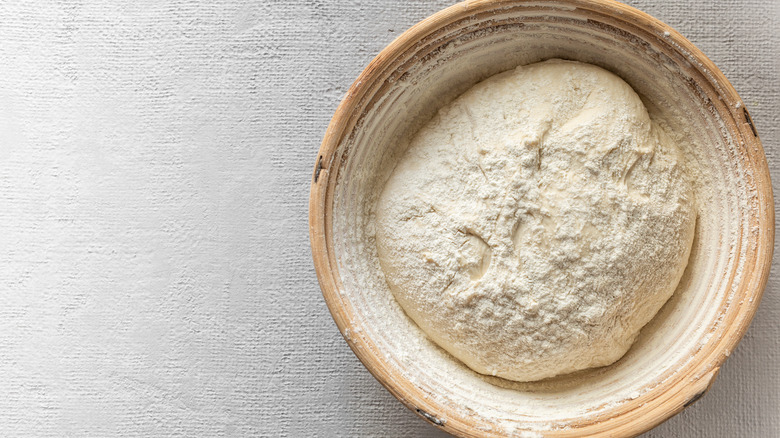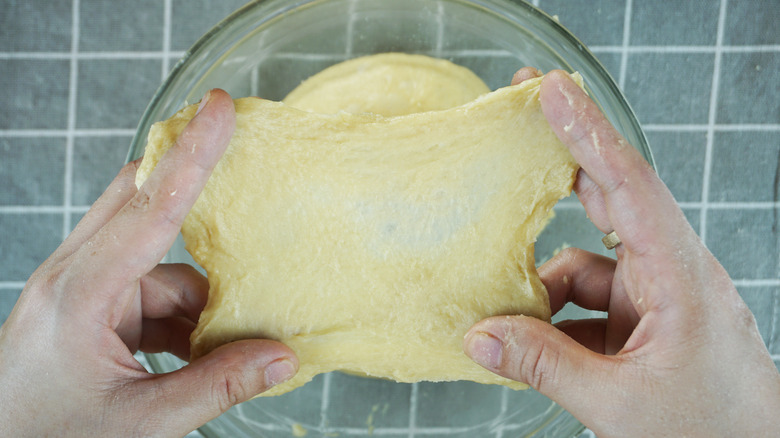The Bread Test Great British Baking Show's Kimberley Wilson Swears By
Home bakers likely know after trying a few different types of bread that getting it just right can be tricky. Whether you want an extra-sour loaf of sourdough or a perfectly round boule of peasant bread, it takes practice to get the flavor, texture, and bake of bread exactly how you want it. One issue some people have is knowing how long to knead their bread dough to develop the gluten.
When water is added to the other ingredients of bread dough, it allows the proteins in the flour to meld together into one protein, gluten (via Love Food Love Science). The more a dough is kneaded, the more the gluten develops which gives the bread dough its stretchy nature. As the gluten develops, the strands get stronger by bonding together. But over-kneaded dough can be tough. That's why you periodically need to test the dough's gluten as you knead it, to ensure it is developed enough without overdoing it.
This is the gluten test Kimberley Wilson likes
Bakers have a couple of ways of testing the gluten in their bread dough. Judge on the "The Great British Baking Show" Paul Hollywood does what he refers to as a "stretch test" (via Eat This!). To do so, he pulls at a piece of dough to see how it stretches. If it pulls apart, then he knows he needs to keep kneading. It's an easy way of knowing when you've kneaded enough without going too far as long as you test often or soon enough.
However, Kimberley Wilson, a contestant on the show during season two, prefers the windowpane method. Instead of stretching the dough, Wilson simply pinches a piece off, holds it in her hands and pulls it in several directions. If the dough pulls in all directions without breaking and you can see light through the stretched center of the dough, the gluten is developed enough. So, the next time you bake bread, give either or both of these tests a try. You might find that you prefer one and that it helps you knead your dough for the perfect length of time.

